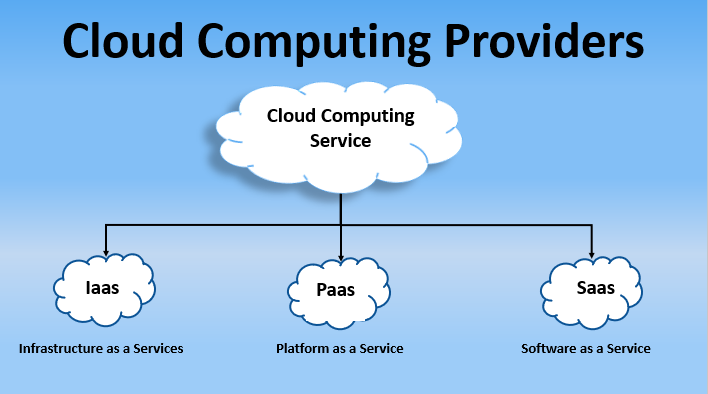Boost Your Organization with LinkDaddy Cloud Services: Unleashing Universal Cloud Service Potential
Boost Your Organization with LinkDaddy Cloud Services: Unleashing Universal Cloud Service Potential
Blog Article
Simplify Your Framework With Cloud Provider
As services browse the ever-evolving landscape of innovation and data management, the role of cloud services in streamlining facilities has actually ended up being progressively popular. The allure of streamlined processes, boosted effectiveness, and improved source appropriation via cloud remedies is obvious. Nonetheless, the journey towards a more economical and nimble IT infrastructure entails more than just moving to the cloud. It requires a strategic strategy and a deep understanding of the nuances of cloud adoption. How can services effectively navigate this shift and truly open the possibility of cloud services for streamlining their infrastructure?
Benefits of Cloud Provider
Cloud solutions provide a streamlined approach to handling IT framework, offering services with adaptability, cost-efficiency, and scalability. One of the essential advantages of cloud solutions is the scalability they offer.
In addition, cloud solutions eliminate the need for businesses to spend in costly hardware and software application. This cost-efficiency is a considerable advantage, specifically for small to medium-sized business wanting to minimize upfront costs. By using cloud solutions, companies can access premium IT resources without the significant price tag connected with traditional facilities configurations.
In addition, cloud solutions give companies with the versatility to access their information and applications from anywhere with a net link. This level of ease of access improves partnership amongst groups, enables remote work, and increases general performance. The adaptability offered by cloud services encourages businesses to adapt rapidly to transforming market conditions and client demands.
Expense Savings and Scalability
In enhancement to the functional advantages highlighted previously, the integration of cloud solutions into a firm's facilities brings forth significant expense financial savings and enhanced scalability. Cloud services provide a pay-as-you-go design, enabling businesses to scale resources up or down based on existing needs, thus avoiding the costs connected with keeping excess capacity. This flexibility enables firms to adapt swiftly to rising and fall needs without incurring unnecessary expenditures.
In addition, cloud solutions get rid of the demand for ahead of time financial investments in software and hardware, lowering resources expenses. Overhead are also minimized as companies no much longer require to manage and keep physical web servers, bring about reduced energy usage and IT staffing expenses. Additionally, cloud services supply automatic updates and upkeep, making sure that the framework stays updated and protected without requiring hands-on interventions.
Boosted Safety Procedures
Implementing strict security measures is extremely important when incorporating cloud solutions right into a firm's facilities to make certain and secure sensitive information compliance with industry additional info regulations. Cloud solution carriers supply improved safety features such as data encryption, firewall defense, and multi-factor verification to mitigate cybersecurity threats.
Additionally, routine safety and security audits and compliance assessments help recognize vulnerabilities and make sure adherence to market requirements. Business can also profit from functions like automated safety and security updates and real-time threat tracking provided by he said cloud company. By focusing on security actions and staying aggressive in attending to potential dangers, services can confidently utilize cloud services while shielding their useful data from unapproved access or violations.
Transitioning to Cloud Infrastructure
To efficiently integrate cloud services into a business's facilities, a structured approach that deals with the shift in the direction of cloud-based solutions is vital. Transitioning to shadow framework entails mindful planning and implementation to ensure a smooth movement procedure - Cloud Services.
As soon as the evaluation is complete, a movement method must be developed. This method needs to lay out the timeline, resources, and duties for relocating each element to the cloud. It is crucial to communicate this plan plainly to all stakeholders to make certain placement and lessen disturbances throughout the shift.
During the movement testing, process and surveillance are critical to determine and resolve any concerns quickly. Regular checkpoints must be developed to track progression and make needed adjustments. In addition, training for employees on using cloud solutions should be given to make certain an effective shift and make best use of the benefits of the brand-new facilities.
Best Practices for Cloud Fostering
Successful fostering of cloud services depends upon the calculated alignment of service purposes with technical capabilities and business preparedness. To guarantee a smooth transition to the cloud, companies should begin by conducting an extensive assessment of their present framework and identifying which workloads are best matched for cloud migration. It is critical to involve essential stakeholders from get more different divisions in the decision-making procedure to obtain buy-in and attend to any kind of issues early on.
Another best technique for cloud adoption is to prioritize safety and security and compliance. Organizations should very carefully assess the protection steps provided by cloud provider and make certain that their data is shielded according to industry criteria and regulative requirements. Executing durable information encryption, gain access to controls, and normal security audits can aid mitigate dangers linked with cloud adoption.

Final Thought

As organizations browse the ever-evolving landscape of innovation and information management, the role of cloud solutions in simplifying facilities has actually come to be increasingly famous - cloud services press release. How can services effectively navigate this change and truly open the possibility of cloud services for streamlining their facilities?
Cloud solutions provide a streamlined strategy to handling IT framework, providing services with cost-efficiency, scalability, and versatility. By using cloud solutions, companies can access high-quality IT resources without the large price tag connected with conventional infrastructure configurations.
To ensure a smooth shift to the cloud, organizations need to start by conducting an extensive analysis of their present facilities and determining which workloads are best suited for cloud migration.
Report this page